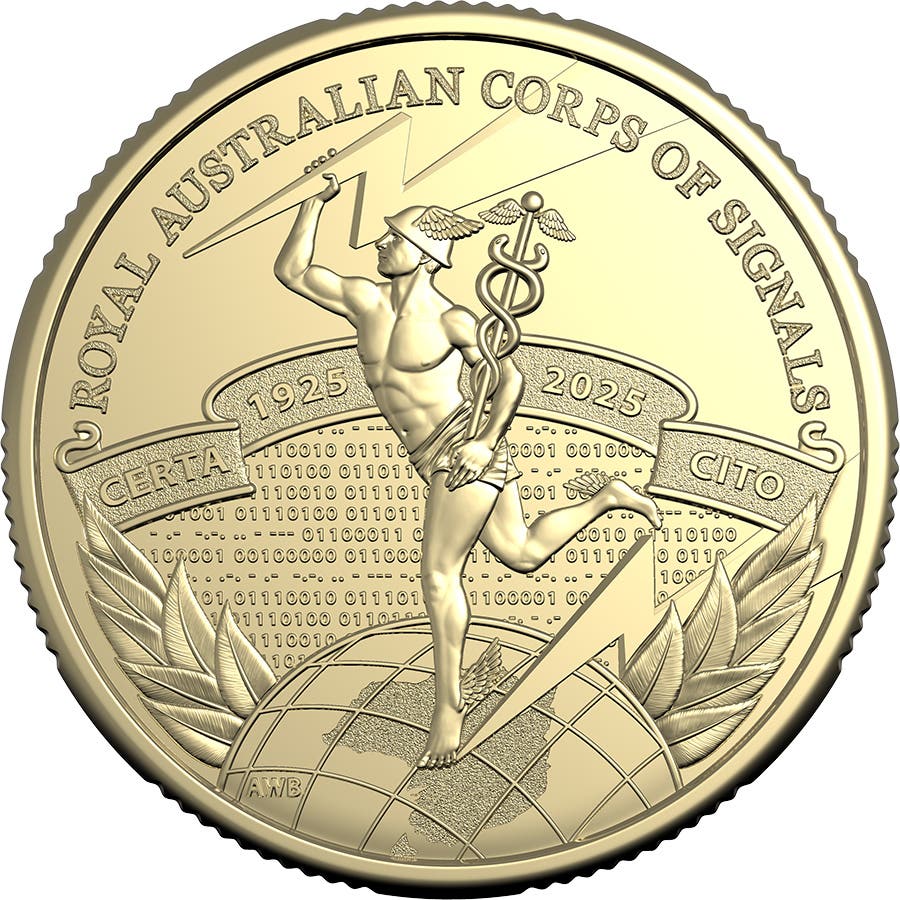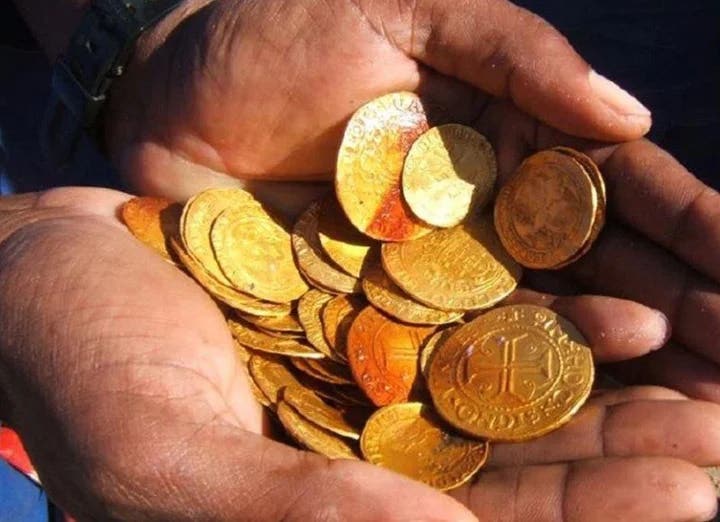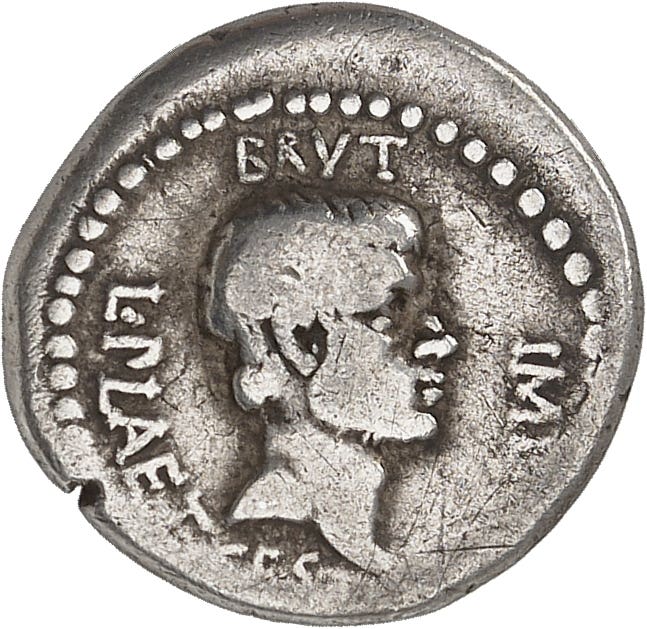Royal Change: Transfer of Power on European Coins
What happens to coins when a monarch or spiritual leader passes? Discover how powers across Europe—like the Vatican, the UK, and Denmark—reflect political and religious transitions in their coinage.
One topic that has been on the minds of many Catholics across Europe is the concern about the health of Pope Francis. While the world watches closely for potential developments in the Vatican, numismatists are also paying attention to the well-being of the spiritual leader of the Catholic Church. This is because a possible passing of the Pope would have implications for euro collectors as well.
In the event of a pope’s death, the Vatican traditionally issues so-called “Sede Vacante” coins. These special editions, minted only during the period between a pope’s passing and the election of his successor, are highly sought after by collectors.
But it’s not just in the Vatican where a change in leadership has numismatic consequences. In many European countries, the transition of a head of state leaves its mark on coinage. How do different nations handle these shifts?
Vatican: Special Coins for Collectors in the Event of a Pope’s Passing
When a pope passes, the Vatican enters a period known as Sede Vacante (Latin for “the seat is vacant”). This transitional phase, lasting from the pope’s death until the election of his successor, sees the Camerlengo (Cardinal Chamberlain) take charge of the Vatican’s secular affairs. The Vatican Mint also adapts to this extraordinary situation—regular coins featuring the late pope’s portrait are no longer struck. Instead, special “Sede Vacante” coins are issued, serving as numismatic records of this interim period. These coins are typically available for only a short time, making them highly coveted by collectors.
The “Sede Vacante” coins of the Vatican follow a traditional design. Instead of a papal portrait, they display the emblem of the Apostolic Chamber, featuring two crossed keys that symbolize Saint Peter and a ceremonial canopy (umbrella). The name of the acting Camerlengo is also inscribed on the coin. These issues come in various denominations and materials, including circulating euro coins and commemorative editions in gold and silver. Once a new pope is elected, the Sede Vacante period ends, and the Vatican begins minting new coins bearing either the portrait or coat of arms of the newly chosen pontiff.
This means Vatican euro coins may exist in two distinct versions in certain years. The last time this occurred was in 2005 when Pope John Paul II passed away after that year’s regular euro coins had already been released. That same year, the Vatican issued a “Sede Vacante” coin set. In contrast, following the resignation of Pope Benedict XVI in 2013, the Vatican chose not to release a full “Sede Vacante” coin set with all eight-euro denominations. Instead, a single 2-euro commemorative coin was issued to mark the transition.
Denmark: One Coin, Two Kings
In the small kingdom of Denmark, a long-standing tradition continues: the so-called tronskiftemønt, or “passing of the crown coin.” At first glance, this type of coin may seem unusual, as it features the outgoing monarch on one side and the new king on the other. However, it is technically just a standard commemorative coin that depicts the newly crowned King Frederik X on the obverse and his mother, Queen Margrethe II, post-abdication, on the reverse. This follows the established Danish convention, where the obverse always features the reigning head of state, while the reverse showcases the actual theme of the coin.
The latest “Passing of the Crown Coin,” featuring both Frederik X and Margrethe II, was released into circulation in November 2024. Regularly issued coins bearing King Frederik X’s monogram and portrait are expected to enter circulation in the second half of 2025.
Denmark has a long history of marking “tronskifte”—the transition of the throne—with special coins and medals. According to numismatist Kirsten Bendixen, the tradition of honoring new rulers through distinctive coinage dates to the 16th century. The earliest known example is the “Ribenobel” from 1524, issued under King Frederik I. Over the centuries, this practice has evolved, with Christian IV and Frederik III producing particularly striking coins.
One of the most fascinating examples, according to Bendixen, is the tronskiftemønt of Christian V from 1670, which features both the new king and his late father, Frederik III—an uncommon design in numismatic history. Frederik IV later revived the tradition by issuing a series of gold ducats featuring both his own portrait and that of Christian V. While coronation medals continued to be minted in later centuries, tronskiftemønt coins became increasingly rare.
In the 20th century, the tradition was revived with the issuance of a 10-kroner commemorative coin in 1972 to mark the transition from Frederik IX to Margrethe II. As described in Bendixen’s research, the coin was designed by Danish mintmaster Frode Bahnsen and features Queen Margrethe II’s portrait along with her royal motto on the obverse, while the reverse depicts Frederik IX along with his birth and death years. In addition to this official Danish issue, private mints, such as Sweden’s Sporrong and Austrian coin manufacturers, also produced commemorative editions. Bendixen highlights that Denmark has developed a distinct tronskiftemønt tradition, setting it apart from other European countries.
United Kingdom: The Long Farewell to the Queen of the Century
For more than 70 years, Queen Elizabeth II has appeared on coins across the globe. As the head of state for the United Kingdom and numerous other nations, her image was featured on circulation, collector, and bullion coins alike. In short, there was no avoiding Queen Elizabeth II in the numismatic world.
Her passing marked a once-in-a-century event, creating an unprecedented situation in numismatics. The 2023 “Britannia” bullion coins, for example, appear three times in coin catalogs: first featuring the Queen (minted in fall 2022 during her lifetime), then with Charles III without a crown (minted at the end of 2022), and finally with a crowned, revised portrait issued exclusively for his coronation.
Now, her son and successor, King Charles III, has taken her place—not just on the throne but also in the world of coins. The UK’s Royal Mint unveiled his portrait on coinage just one month after the passing of the record-breaking monarch. The new design, created by sculptor Martin Jennings, depicts the king without a crown, which follows a long-standing tradition. Historically, British monarchs have appeared uncrowned on coins, with only a few exceptions. Notably, Queen Victoria (who had three different effigies) and Queen Elizabeth II (who holds the world record with five official portraits) saw later designs featuring a crown.
With the release of the 2024 “Britannia” bullion coin series, the transition from Queen to King is now complete. For the foreseeable future, the uncrowned King Charles III will be a constant presence for precious metal investors—and as tradition dictates, it will likely be another 10 to 15 years before the next “facelift” of his portrait appears on coins.
Luxembourg: The Next Generation Is Ready to Step Up
Most coin collectors may not have much interest in the latest tabloid gossip about European royal scandals, but when a monarch abdicates, and the next generation takes the throne, it usually has numismatic implications. And what’s set to happen in Luxembourg in 2025 has all the makings of a breaking news event. Just before the end of 2024, Grand Duke Henri, who has led the small country nestled between Belgium, France, and Germany since 2000, announced his abdication.
This transition had been anticipated for some time, especially after Henri appointed his son Guillaume as Lieutenant Representative a few months earlier. However, the Grand Duke kept the exact timing of the generational shift a closely guarded secret, keeping his subjects in suspense even during his Christmas address. At the very end of his speech, after emphasizing that he and many of his generation were gradually stepping back, he finally revealed the official date. On October 3, 2025, Hereditary Grand Duke Guillaume and his wife, Stephanie, will be inaugurated as the new heads of state.
The throne change in Luxembourg marks a turning point for euro collectors in several ways. They will have to bid farewell to Grand Duke Henri, who has appeared on more 2-euro commemorative coins than any other individual. Additionally, for the first time since the introduction of the euro, Luxembourg will see a complete redesign of its circulation coins, replacing the angular portrait of the Grand Duke created by Luxembourgish sculptor Yvette Gastauer-Claire. The new circulation coins featuring Guillaume’s likeness are set to be released in 2026.
The Grand Dukes of Luxembourg are the undisputed record holders when it comes to appearing on euro coins—thanks to a Luxembourgish law requiring that the Grand Duke’s portrait or his monogram be featured on all the country’s euro coins. As a result, Luxembourg’s commemorative coins are almost entirely dedicated to the monarchy and its members.
It all started in 2004 with a coin featuring Grand Duke Henri’s monogram, followed by issues marking his 50th birthday and the 5th anniversary of his reign in 2005. In 2006, a coin was issued to celebrate Hereditary Grand Duke Guillaume’s 25th birthday. He made another appearance on Luxembourg’s euro coins in 2013 for his wedding to Countess Stéphanie and again in 2022 for their 10th wedding anniversary. The numismatic family album of the House of Nassau-Weilburg also includes coins commemorating the birth of an heir to the throne, Prince Charles, in 2020 and the 40th wedding anniversary of Grand Duke Henri in 2021.
While there are no plans for a special abdication coin honoring Grand Duke Henri, the Banque Centrale du Luxembourg has come up with a different numismatic highlight. For the first time ever, Luxembourg will issue officially colorized 2-euro commemorative coins later this year to mark the throne transition celebrations.
Additionally, rumors about further special issues are circulating, and one thing is certain—the generational shift in Luxembourg will be an exciting event for euro collectors.
Netherlands: A Double Double-Portrait
In 2013, the Netherlands took a unique numismatic approach to commemorate the transition from Queen Beatrix to King Willem-Alexander. That year, a 2-euro coin was issued to mark the announcement of Her Majesty Queen Beatrix's abdication, followed by another 2-euro coin in 2014 dedicated to the official farewell ceremony in honor of former Queen Beatrix.
What makes these coins special is their mirrored design. On the first coin, Beatrix is in the foreground, with her successor (then still referred to as Prins Willem-Alexander) positioned behind her, both facing left. On the second coin, the new king takes the prominent position, while his mother—now addressed as Prinses Beatrix—appears in the background, with both figures looking to the right.
Redesigning Euro Coins – A Rare Event
A look inside the wallets of Europeans makes one thing clear: redesigning euro coins is a rare occurrence. Most countries continue using the same designs that were introduced when the euro was first adopted. According to EU regulations, the only instance that justifies a short-term design change is the succession of a head of state.
Beyond leadership transitions, member states are only permitted to update the design of their national coin sides once every 15 years. This allows for modifications to the portrait of the head of state or other national symbols while maintaining a degree of consistency and recognizability across euro coinage.
You may also like:








